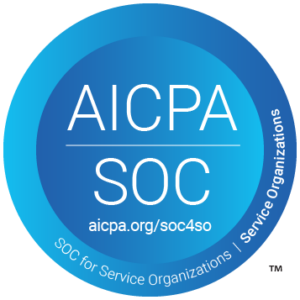With workplaces quickly migrating to the digital realm, companies are finding the need to adapt to the trend. Chief among the concerns of these companies is how to adjust their employee well-being strategies to keep their retention rates healthy. Power has shifted to remote job seekers, giving employees more choice in whom they work for. As a response to this, employers have been actively revamping and reinforcing their employee well-being strategies to attract the most desirable talent.
Before looking at some ways to strengthen your employee well-being strategy for the age of remote-first companies, it makes sense to define the different types of well-being as they relate to your employees.
The types of employee well-being
Well-being has various aspects that interrelate with each other, and to be thoroughly well means to be well in each aspect. Your employees’ physical health can play a role in their financial wellness, which may have an effect on their psychological or emotional states. When one area of your employees’ well-being suffers, even if the others are in tip-top shape, detrimental effects can spill over into other facets of their health.
1. Physical
Possibly the most traditional side of employee well-being, physical well-being involves the prevention or curing of physical illnesses. Fitness incentives and gym memberships are popular components of employee well-being strategies, but there are other ways to promote healthy living and curb the development of disease. Subscriptions to meal kit delivery services and company newsletter content featuring nutritious at-home recipes or tips for balancing screen time with physical activity can also help boost your employees’ well-being.
2. Mental/Emotional
Stress is an ever-present factor in everyone’s life. The workplace may cause much of this stress but, regardless of its origins, it affects your employees’ performance nonetheless. Employee well-being accounts for stress and burnout, as well as any other feelings that create psychological unease. Openly discussing the importance of mental health at work and fostering a company culture promoting mental well-being can result in employees taking fewer sick days and performing better on the job.
3. Social
Social well-being concerns your employees’ interpersonal relationships, in the workplace and outside of it. At work, it means relationships with coworkers, managers, customers, and other stakeholders. It also refers to employees’ sense of belonging within their company, and how they view themselves as members of the team. Social connections nourish well-being, and so encouraging those connections through gatherings at voluntary events, both virtual and in-person, is key to enriching your employees’ health and productivity.
4. Financial
Financial well-being could be the most overlooked aspect of employee well-being. Your employees’ everyday job performance hinges partially on their sense of security and their feeling of financial solvency. The fear of getting behind on payments or having to borrow money to make ends meet can be a significant hurdle, impacting how well your employees focus on their jobs and stay productive. It behooves employers immensely to offer services that assist their employees in making important financial decisions.
Planning your employee well-being strategy
Employers like to talk about employee well-being, with management teams and HR departments drawing attention to their wellness-oriented initiatives and touting the health insurance plans offered within their benefits packages. Beyond lip service, however, oftentimes little gets accomplished by a great many companies in aid of their employees’ actual well-being. Static surveys demanding the periodic checking of boxes have lost their effect; it’s time for employers to develop more dynamic, bilateral ways to engage with their employees.
Engagement is a two-way street
For your employee well-being strategy to be successful, there must be a strong element of trust in your relationships with employees. Trust is built on reciprocity, consistency, and personal connection. Trying to construct trusting relationships without those components is like stacking books on a sailboat—the endeavor is typically short-lived. Gaining your employees’ trust is much easier when you engage with them through their preferred channels in a way that puts them at ease so they can be candid.
Building a direct line of bilateral communication with your employees empowers you with actionable insights straight from the source. In turn, proactive engagement from your employees reduces your organization’s need for surveys and similarly dated data collection tools. By maintaining open airwaves with your employees through real-time channels, you can better support their well-being as well as your organization’s.
Make it personal
If your employees get the idea that they’re regarded as assets of the company rather than unique individuals with distinct identities, they won’t be around much longer. Personalizing communications with your employees, no matter what forms those communications take, goes a long way to make them feel like they’re respected, valued, and integral parts of your organization. Besides including their names, messages to employees can be thoughtful enough to mention birthdays, hobbies, and any additional information that will enrich your conversations.
Well-being outside of work
Employee well-being is a holistic concept that incorporates well-being inside and outside of the workplace. Successful well-being strategies are those that account for how employees are doing at work, at home, and elsewhere. Trust again comes heavily into play here, as employees may be uncomfortable discussing matters outside of their jobs. It’s crucial to establish open lines of communication with your employees to encourage them to seek help for any problems they may have, even those that aren’t work-related.
Employee well-being strategies have undergone serious changes in recent years as workplaces go virtual. The same old initiatives and tired rhetoric no longer cut it in the current marketplace where employers are competing intensely for remote talent. Benefits packages bursting with evidence of an employer’s true concern for their employees’ well-being become more and more abundant. Thinking holistically and understanding the significant role that trust plays in relationships will be key as you create your employee well-being strategy.
To learn more about employee well-being and engagement strategies, download Mainstay’s guide to texting employees.

